*** NOTE: ALL INFORMATION IS ACCURATE AT DATE OF PUBLISHING ***
In the Behaviour section in Google Analytics is an area for Events. Events are user interactions with content that can be measured independently from a web-page or a screen load. Downloads, link clicks, form submissions, and video plays are all examples of actions you might want to analyse as Events. Using Google Tag Manager, we can create variables, triggers and tags to assist in tracking these interactions. In this post, we will review two different events and how you can use them. The first example will provide us with the ability to track any outbound links that are clicked by a visitor. By outbound, this means any link you have on your own site to another website. For me, I have links in my blogs to all kinds of things. I link to other peoples Twitter & LinkedIn profiles if I mention them in a post, or link to documentation or other blog posts if I want to provide someone with more information. How would I know which of those links are even being clicked on? Go to Google Tag Manager (visit this post if you didn’t set it up yet!), and create a new variable. This will have a variable type of auto-event variable, using the Element URL. The Component Type should be set to Is Outbound. Give your variable a name and save it.
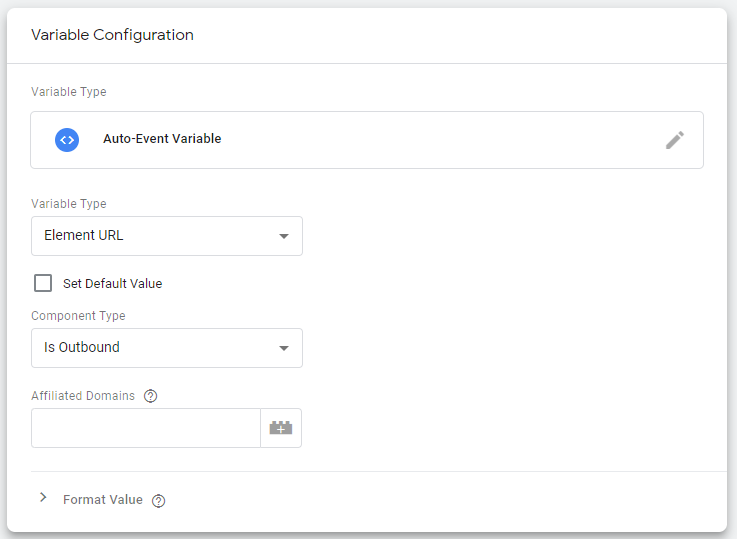
Now set up a new trigger, with the trigger type of ‘Click – Just Links’. This should trigger on Some Link Clicks. The conditions should then be set to Outbound Link Clicks equals true. So we only want this trigger to fire when someone clicks on a link to another site, not links within our own site.
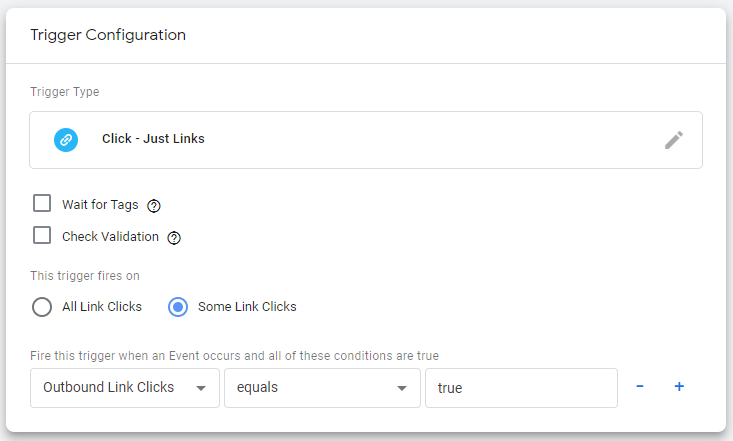
Finally, we need to add a new tag. The tag type should be Google Analytics: Universal Analytics. Set the Track Type to Event. This will make sure it shows up in the correct place in Google Analytics. The Category, we can call whatever you want. As I am using this to track Outbound Links, that’s what I’ve called it. The Action is set to {{Click URL}} and the Label is set to {{Clink Text}}. This can be selected by clicking on the lookup for an existing variable. You don’t need to add this in. The other item that’s important is the Google Analytics setting. Use the variable you (hopefully) already created when you set up Google Tag Manager. In the Triggering section, set the trigger to be the trigger you created in the step above. Make sure to preview and then submit your changes.
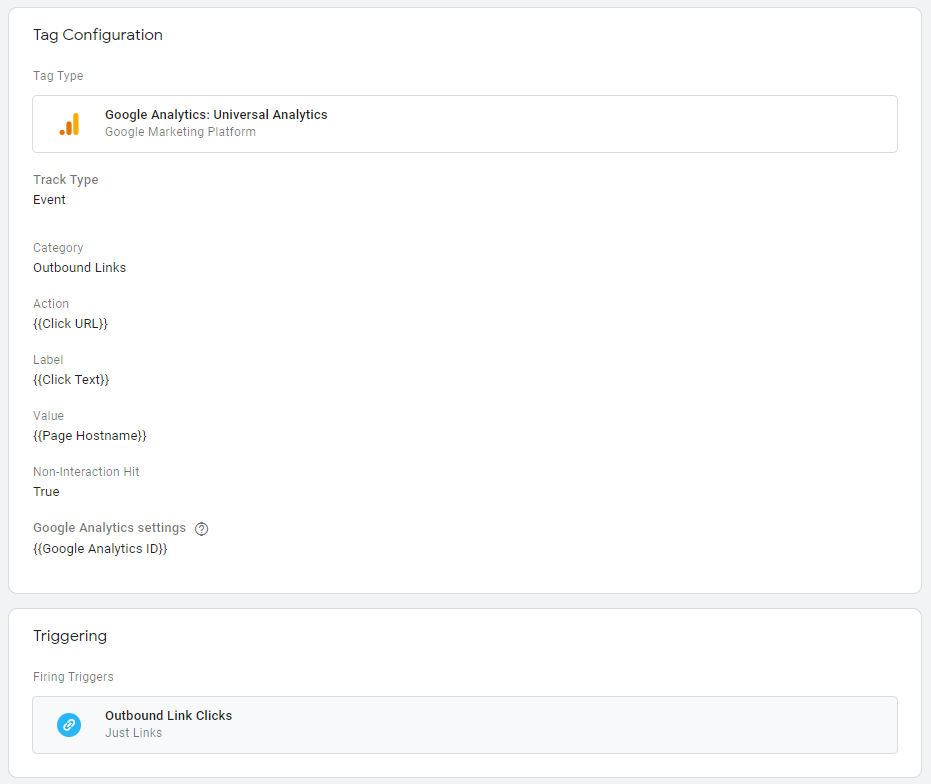
Now if we look in the Events area under the Behaviour section, we will see all of the Categories listed for any events created. We can see the Outbound Links category with 245 events.
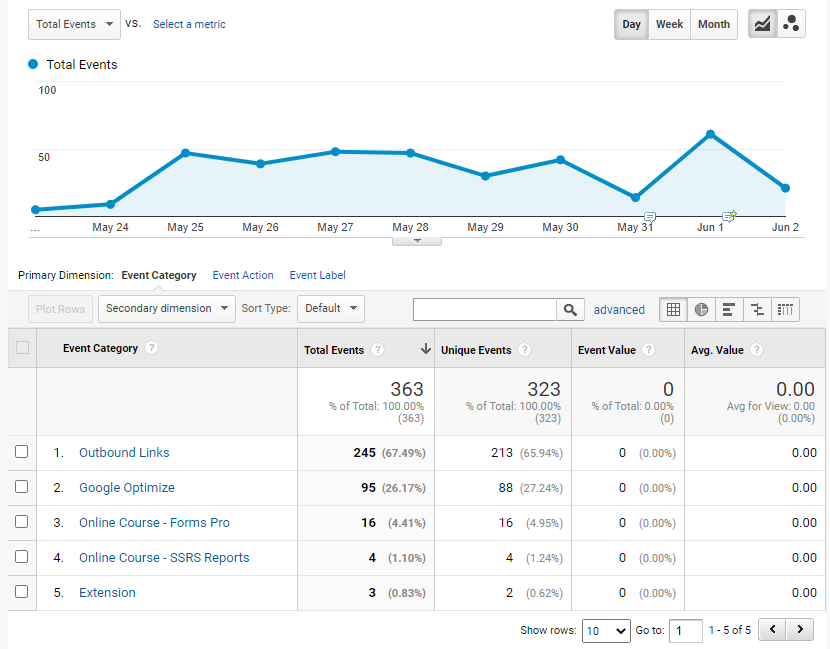
If we click on the category, we can drill down and see all of the events by the action. This shows us which of the outbound links on our site are actually being clicked on.
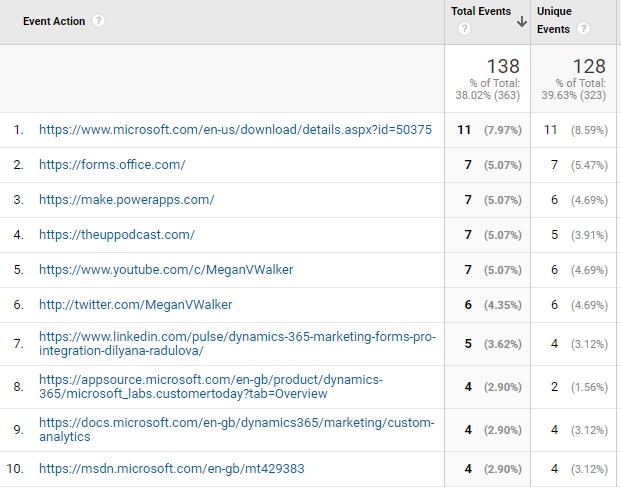
Another option is to add a trigger and a tag to Google Tag Manager which we can then use within a Goal. I have a couple of online courses, with links to the courses throughout my site. I wanted to specifically know when that link was being clicked on, and which of the pages were getting the most clicks. First, we need a trigger. We use the trigger type of Click – Just Links, and then fire it on Some Link Clicks. The condition to be met is that the Click URL starts with … and then whatever the link is you want to track.
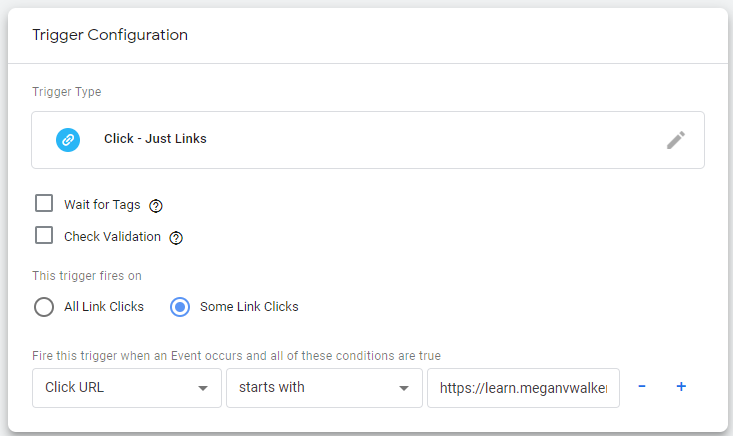
We then need a new tag. The tag type is again, Google Analytics: Universal Analytics. It’s an event, and I have set my category as Online Course -Forms Pro as this is what I want to track. You can call it whatever you like, but you want to make it obvious so when you are reviewing all of your Events, you can tell what you are reviewing. In the triggering section, pick the trigger just created in the step above.
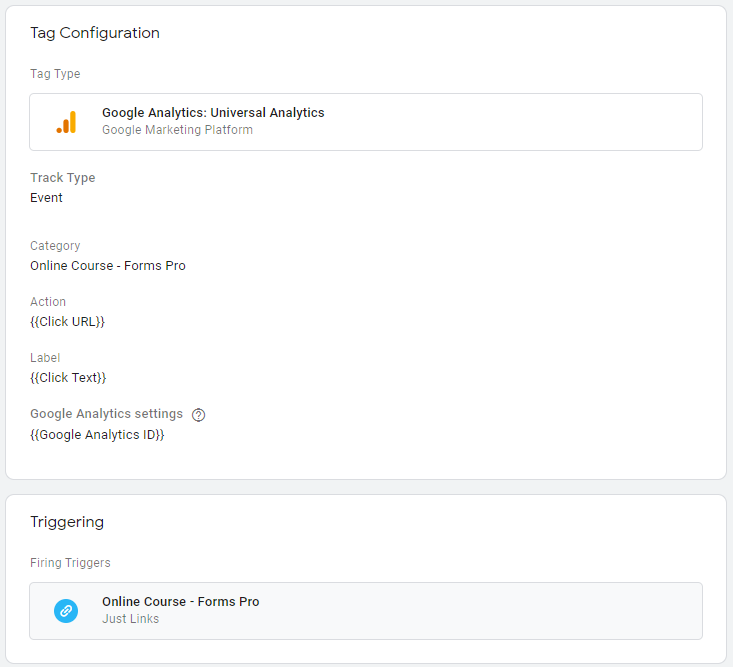
Now we can use the Event in a goal. Create your new goal, and set the goal type to Event. Now we can set the goal conditions. In this example, I’ve set it that the category must equal Online Course – Forms Pro.
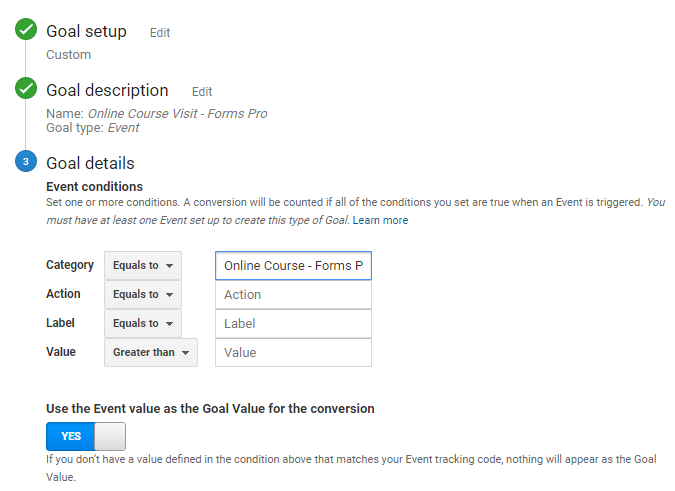
Now when reviewing the Goal rather than the Event, I can see the Goal Completion Location, so I know where the user was before they clicked on a link to take them to my Forms Pro Course page.
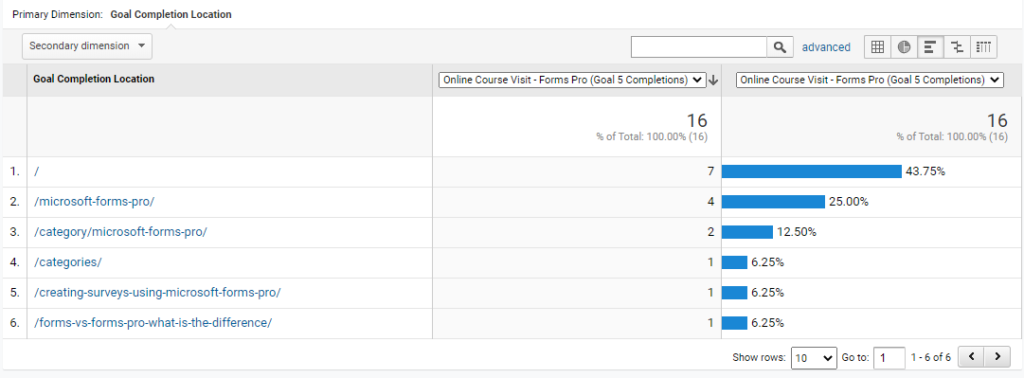
Hopefully, you can see the value of adding new tags to Google Tag Manager to use in reviewing interactions as events. How will you use this functionality?
Want to just watch how to do this? Check out the video: https://youtu.be/8IV5UNOVy6w
Check out the latest post:
Use The Command Bar To Add A Custom Page To A Table
This is just 1 of 561 articles. You can browse through all of them by going to the main blog page, or navigate through different categories to find more content you are interested in. You can also subscribe and get new blog posts emailed to you directly.
